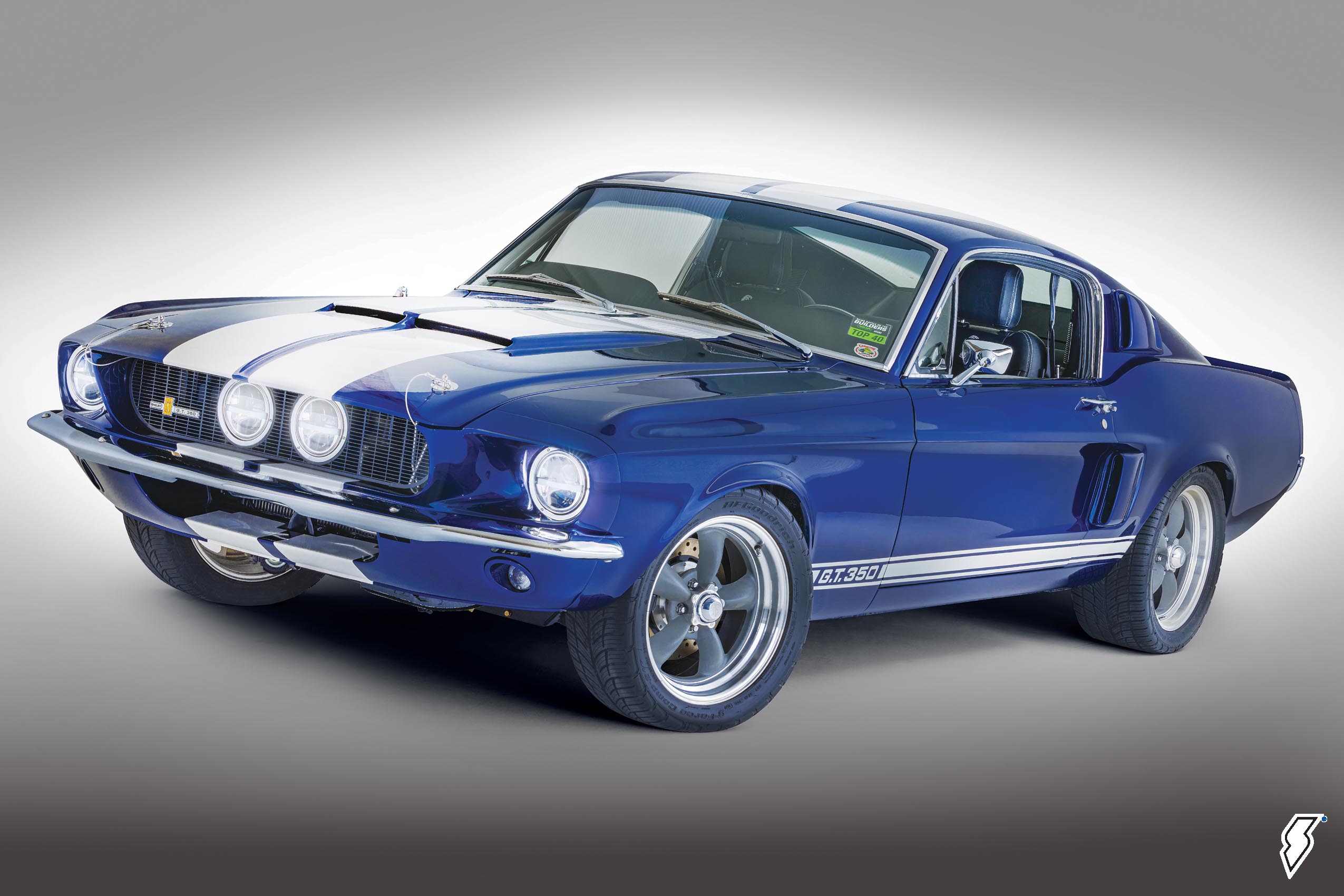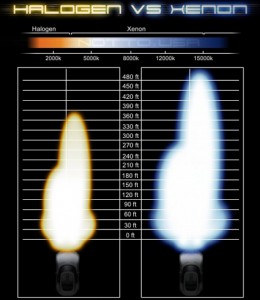Lighting has gotten huge in the automotive aftermarket—and with good reason.
The proper lights—headlights, taillights, and auxiliary lighting—can deliver improved safety, enhanced vehicle styling, and added versatility. It’s no wonder the amount of light options available has exploded recently. Every year, we see more and more lighting innovations and options at the SEMA Show, and we even named LED lights as one of our Top 6 Automotive Trends at SEMA 2014.
With more questions comes more confusion. So, with help from Hella, PIAA, and Summit Racing, we’ve put together this basic guide to automotive lighting. It doesn’t cover everything, but it answers some of the most common questions regarding vehicle lighting, starting with auxiliary lights.
What are Auxiliary Lights?
Auxiliary lights work in conjunction with your stock lights to deliver added visibility in certain conditions. There are three basic types of auxiliary lights: fog lights, driving lights, and off-road lights.
Fog lights are used for poor weather conditions such as rain, fog, or mist, or anywhere you may need additional lighting for safe driving. Unlike regular lights, which reflect off the water droplets in the air and back into your eyes, fog lights minimize the amount of return glare. This is accomplished by creating a wider, lower light beam that projects downward onto the road. The light pattern avoids the water droplets in the fog or rain, creating less glare and better visibility.
To get the proper balance of range and reduced glare (for you and oncoming motorists), proper mounting is essential when installing fog lights. The Society of Automotive Engineers (S.A.E.) has developed a standard system for fog light mounting. The organization recommends your mount fog lights 10-14 inches above the ground and then test the angle of the beam at 25 feet. The top of the beam should be about four inches below the center of the lamp itself (see diagram A below).
Driving lights are designed for seeing objects at greater distances. When used in conjunction with your regular lights, driving lights give you the ability to see further down the road. To prevent blinding oncoming motorists, the S.A.E. has also developed a method for mounting driving lights. The lights should be mounted 14-30 inches from the ground and then tested at 25 feet. The beam should be angled down to a spot about 1.5 inches below the center of the light’s original hot spot (see diagram B below).
Off-road lights provide added light for trails and other rugged terrain. You can get off-road lights that function as fog lights and driving lights, but these lights are generally weatherproof and more rugged than standard fog and driving lights. They’re usually made from materials like ABS plastic, aluminum, and steel.
The other thing that sets off-road lights apart is the variety of sizes and configurations. You’ll find off-road lights that mount to your bumper, grille, and light bar. Or you can purchase entire off-road light bars from companies like KC HiLITES, Rigid Industries, and more.
What are My Choices for Headlights?
There are two main types of headlights: reflector and projector.
Reflector headlights have been around for a long period of time, and you’ll often see “OEM” and “sealed beam” used interchangeably with this style. In this style of headlight, a small light source is magnified into a more powerful beam through the use of mirrors within the headlamp. The light from the bulb strikes the reflective surfaces and bounces back as a larger, brighter beam.
Projector headlights take the reflector technology and add another step. Once the light bounces off the reflective surface, it travels through a lens that focuses it into a tighter, more intense beam. The advantage here is that very little light is lost or scattered upon reflection.
There are a couple ways you can upgrade your headlights. You can convert reflector headlights to a projector-style setup for increased visibility and a cooler, more futuristic look. Often (but not always), projectors also come with halo rings that add color to the area around the projector. You can also simply add a Halo Kit which encircles your headlights with a colored ring for added style.
Depending on your vehicle, you can also swap out your headlights for a different style, lens color, or housing color.

What’s New in Taillights?
A lot.
In fact, there are over 4,000 choices listed on the Summit Racing website for taillight assemblies—and that’s just the tip of the iceberg! The company has access to thousands more styles, sizes, and applications from its manufacturers. Depending on your application, you can choose a large variety of shapes, lens colors, and housing colors to change up your boring taillights. You can also upgrade to modern bulbs.
And speaking of bulbs…
What About Bulbs?
Automotive lights come with several different bulb options. It’s important to know what you’re choosing from, so here is a basic rundown of the differences:

Incandescent: These are the old-school bulbs used in headlights, taillights, and turn signals.
Halogen: Like incandescent bulbs, a halogen bulb uses a filament. However, this tungsten filament is contained inside a vacuum so it burns at a higher temperature to generate a brighter light. Overall, halogen lights tend to last longer than incandescent lights and perform at a higher output.
HID (High Intensity Discharge): HID lights use Xenon gas, which produces an extremely intense, white light. At the same time, they consume much less power than typical halogen lights, making them a popular choice.
LED (Light Emitting Diodes): As we mentioned, LED lights are all the rage right now. LED technology emits a small area of spectrum light to create different contours and colors. This has allowed lighting manufacturers to incorporate LED lights in accessories like bull bars and grilles, as well as traditional light bars and housings. These lights are bright yet require low power consumption and offer a long service life. Although you’ll notice LED lights in many auxiliary lights, you can also find LEDs in headlights and taillights.
Which Lights are Right for Me?
The right lighting comes down to a few variables:
- Your vehicle: Older, vintage vehicles are probably also using vintage technology. You can upgrade to an all-new style of headlights/taillights with modern styling or swap in a conversion headlight set to increase visibility without compromising the look of your classic car. Does your vehicle spend time off road? The right combination of off-road lighting can supply enough light to illuminate your campsite, fishing hole, or trail without risk of breaking.
- Your climate: If you live in area with frequent fog or rain, a good set of fog lights can assist you in your travels. A set of driving lights would provide greater visibility in clear conditions.
- Your local roadways: If your location has mostly straightaways, driving lights will allow you to see further ahead. For winding roads, a nice set of cornering lights would give you improved visibility.
As usual, budget can also play a role in the type of lights, light styling, and light bulbs you use. Old-school reflector lights, for example, may cost more than modern projector-style or LED lights.
Do your homework, and we’re confident you’ll see the light—the right light for your needs.






Helpful but we need more info on led system and patterns of the light
Show more About Led head lights,plug and go kits
Hello David, this article may help – Headlight Buyer’s Guide & Dictionary: Understanding HIDs, LEDs, Sealed Beams, Projectors & More
[…] It would be interesting to see if you still have a pattern anything like the below diagram: (from Light Source: A Quick Guide to Automotive Lighting – OnAllCylinders ) David 2016 Kuga Titanium 2.0l EcoBoost murcod is online now […]
My husband wants to become a trucker when he gets his driver’s license, and he told me that he may experience inclement weather during his travels. I think it would be useful for him to buy some lighting accessories for the truck he will use so he can see better in such conditions. As you’ve mentioned, fog lights are used for poor weather conditions, so this might be useful for him if he buys some.